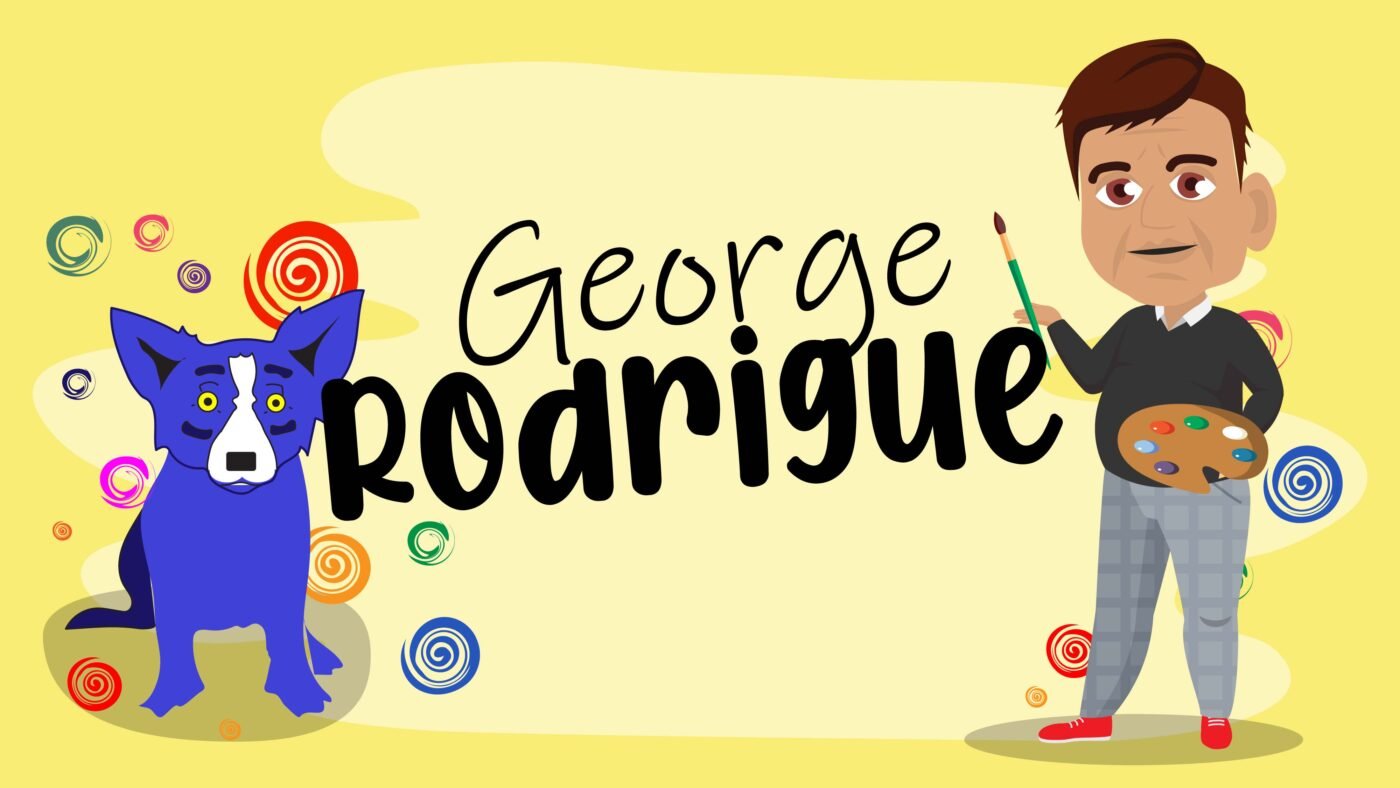No products in the basket.
Art History
1 Blue dog: The life and art of American artist George Rodrigue and his catapult to fame
Hello, I am Artist Lillian Gray. I would like you to meet someone, American artist George Rodrigue. George Rodrigue became famous for his blue dog paintings. The Blue Dog paintings, based on a Cajun legend of the Loup-garou, catapulted George Rodrigue to worldwide fame.
He painted a bright blue dog with yellow eyes doing all kinds of things, such as Blue dog in space, Blue dog visiting the White House, Blue dog as a cowboy, Blue dog at the beach and even blue dog on a flying carpet!
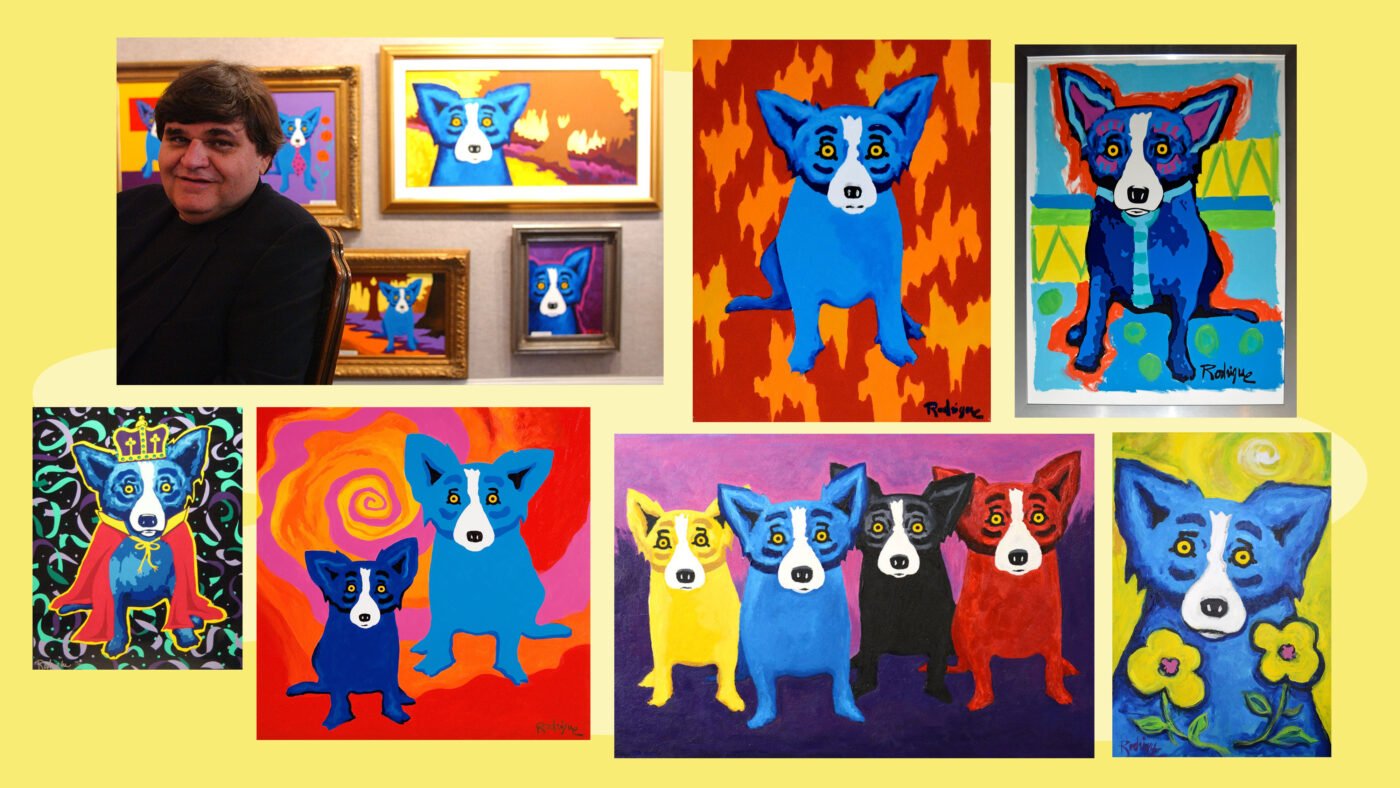
Let’s delve a little deeper into Cajun Culture and George Rodrigue’s story to discover the meaning behind this blue dog.
The start of George Rodrigue’s art career
Rodrigue was born in southern Louisiana in 1944. At the age of 8, George was diagnosed with Polio and remained in bed for months. By being bed-bound cultivated a love for art, especially drawing and painting. When he completed school, he studied art at the University of Southwest Louisiana and later attended the Art Center College of Design until 1967.
While studying in Los Angeles, George realised how different and unique Louisiana was. He longed for the old culture of the Cajuns.

“I grew up feeling a strong relationship to the old things, to the old culture, and I got a stronger feeling when I went to Los Angeles to school. I started to understand how different I was and how different my Louisiana was.”
George returned to Louisiana in the late 1960s and became well known for his interpretations of Cajun landscapes and subjects, inspired by his roots.
Cajun Culture
So what is Cajun Culture exactly?
The Cajuns, also known as Acadians, is a specific community mainly living in the U.S. state of Louisiana. Most Cajuns are of French descent. The Cajuns make up a significant portion of the state’s population and have had an enormous impact on the state’s culture. But how did they get there?
When the New World, a.k.a America, was discovered, various people from Europe came to settle in America and Canada to start a new life.
The Acadians, French Settlers, settled initially mainly in Canada on the East Coast. (Present-day NovaScotia, New Brunswick, Maine and Prince Edward Island.)
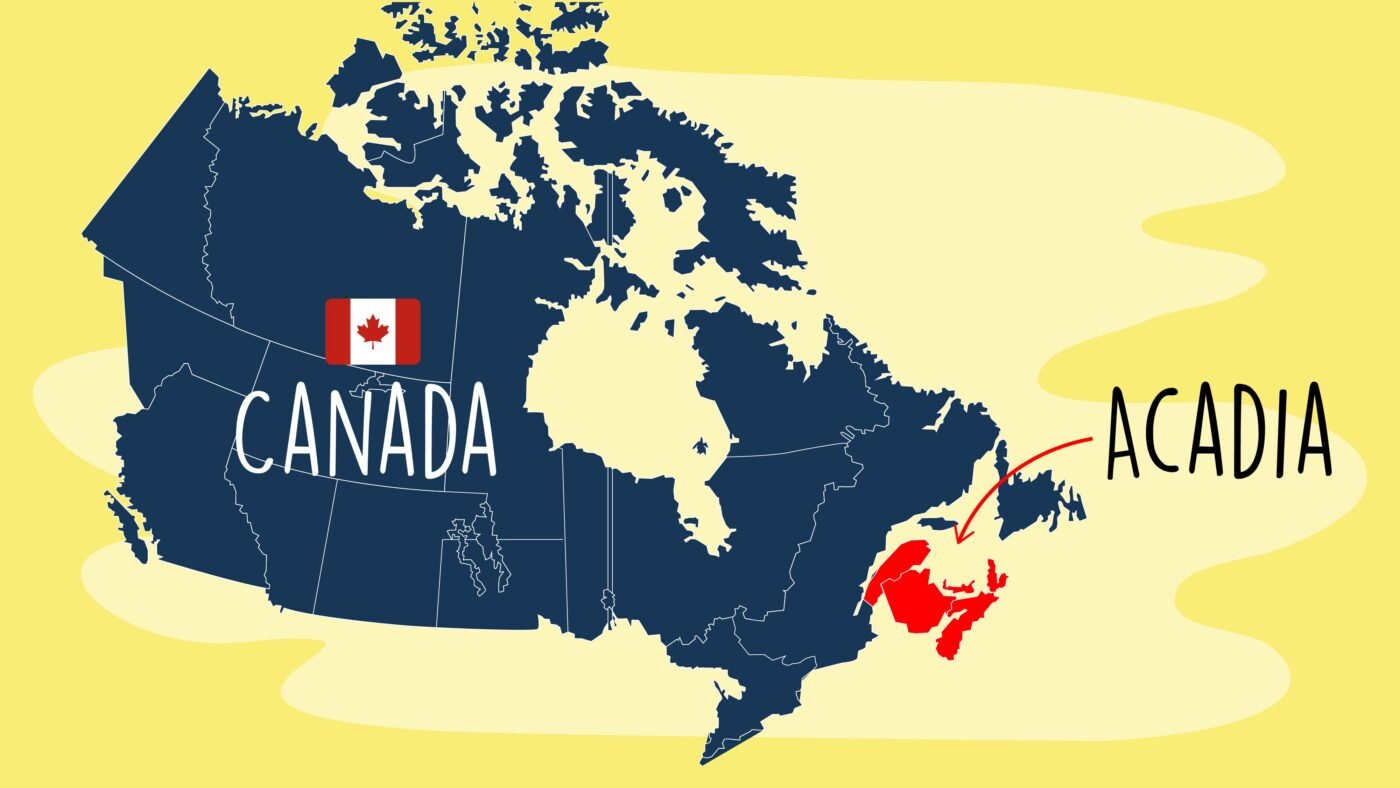
In 1756 War Broke out between the British and the French Settlers. It is known as the Seven Years’ War (1756 to 1763). Eventually, the British won and many Acadians were captured and deported. Many farms and businesses were destroyed. The deportation of the Acadians from these areas has become known as the Great Upheaval or the Great Expulsion.

Many Acadians were driven to Louisiana, with its almost uninhabitable marshy landscape.
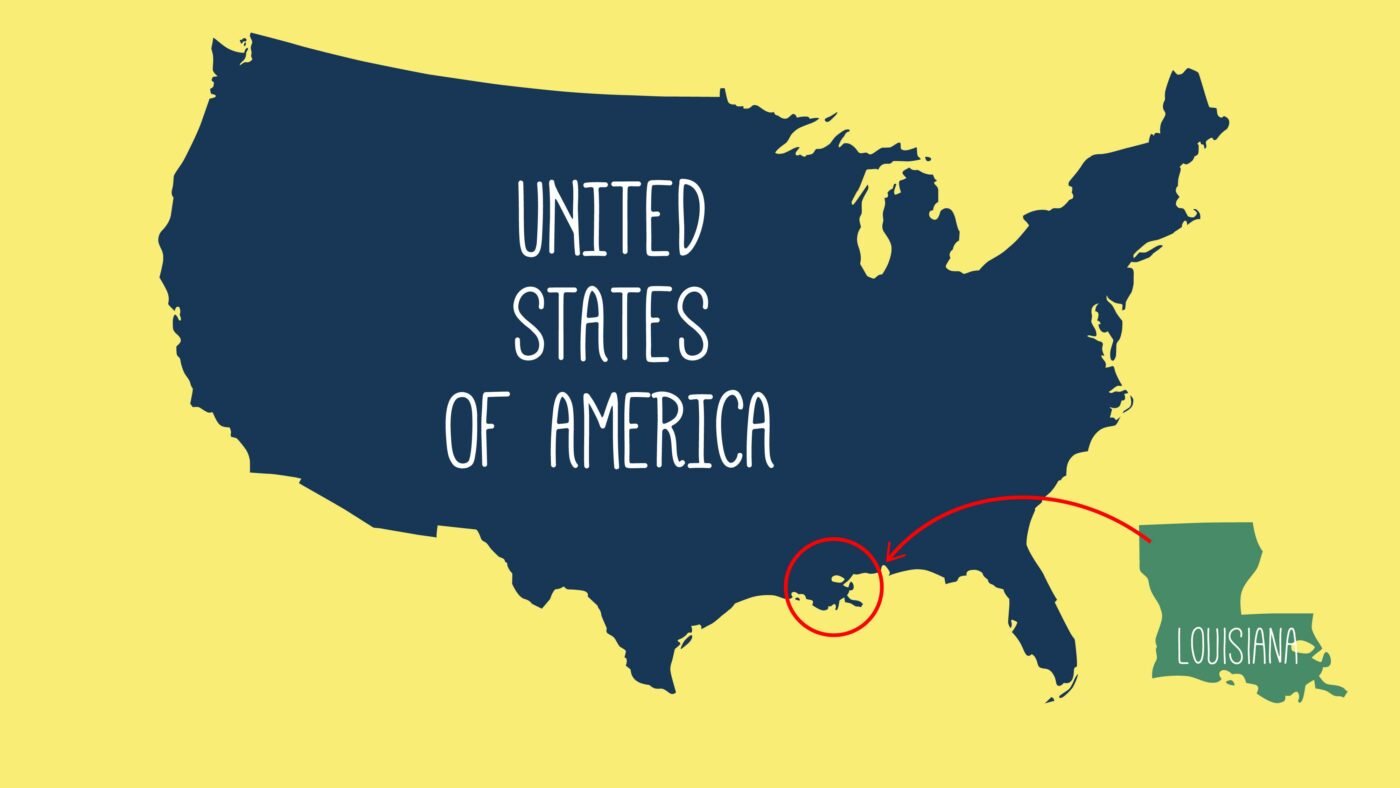
During the 18th and 19th centuries, the Arcadians became known as the “Cajuns”, the French-speaking rural people of Southwestern Louisiana.
Ok, let’s fast forward a bit to the early 20th Century. Attempts were made to suppress Cajun culture. The Cajun French Language was forbidden in schools. American teachers threatened, punished, and sometimes beat their Cajun students in an attempt to force them to use English (a language to which many of them had not been exposed before).
Over the 20th Century, a sense of nostalgia formed in the people of Louisiana – a longing for an idealised past. “Cajun”, formerly considered an insult, became a term of pride among Louisianans by the beginning of the 21st Century.
Since their establishment in Louisiana, the Cajuns have become famous for their unique French dialect, Louisiana French and have developed a vibrant culture including folkways, music, and cuisine.

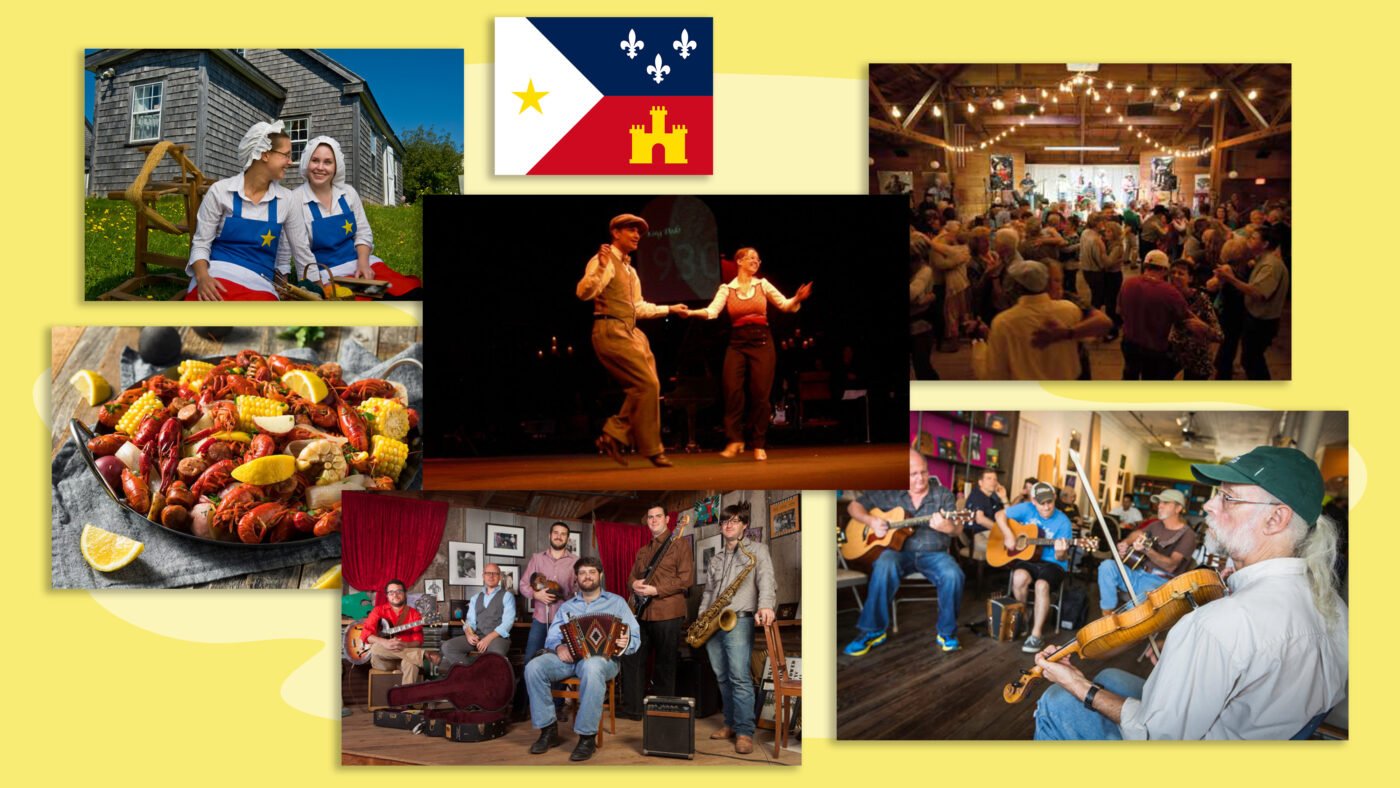
George Rodrigue’s deep connection to his roots.
Ok, Back to artist George Rodrigue. He was born in Louisiana and was of Cajun descent.
His mother felt strongly that they were not Cajun but French. She did not want to be associated with the derogatory word Cajun. Rodrigue wanted to change the negative connection with being Cajun. Instead, he wanted to celebrate his culture. In the 1960’s Rodrigue started painting Louisiana Landscapes. He also painted large family gatherings, which the Cajuns are known for.

You will notice that this period of his art is filled with landscapes done in dark, dull colours. Not at all like his later works, which are bright and vibrant. But this period is essential since it formed George Rodrigues style and eventually led him to create Blue Dog.
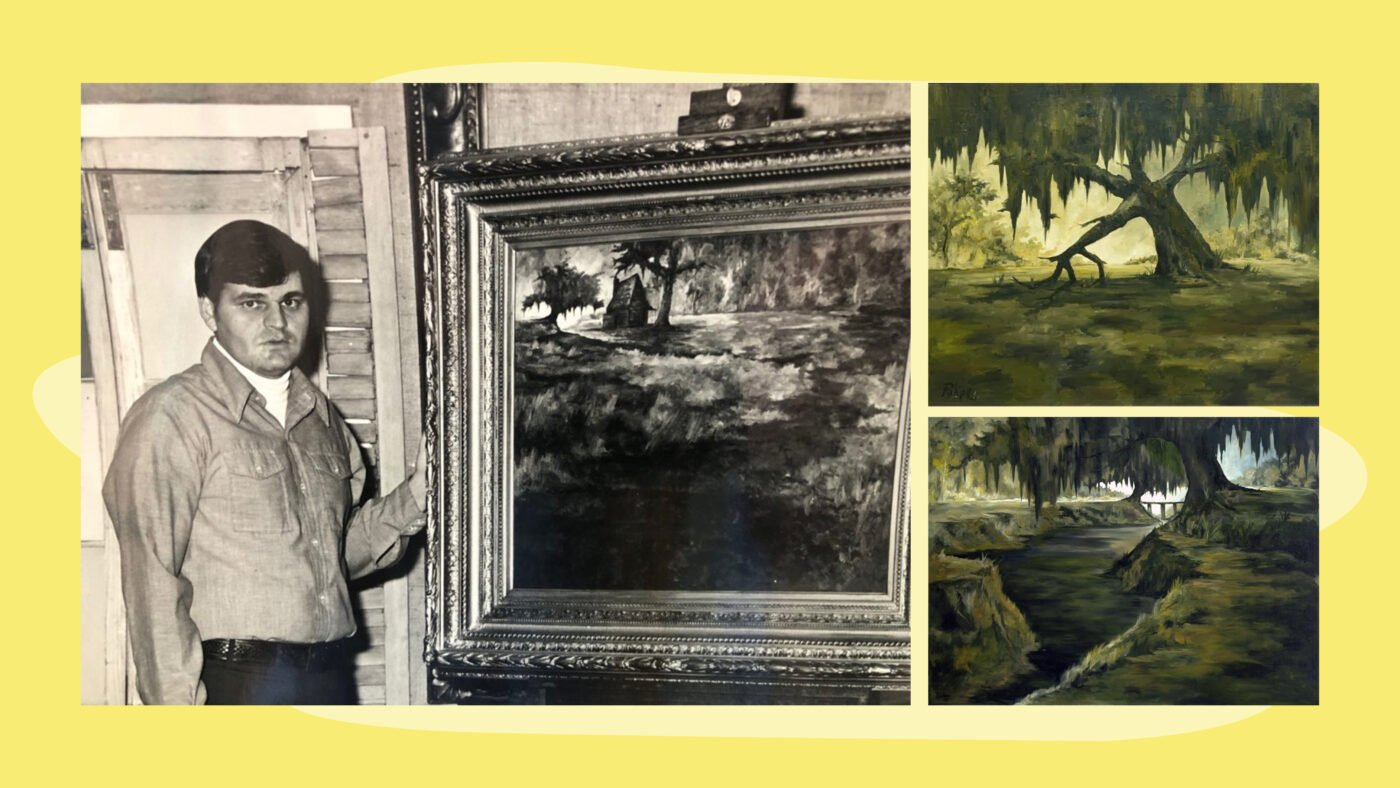
Some of the most important paintings in Rodrigue’s early works are The Aioli Dinner and the Saga of the Acadians.
The Aioli Dinner

Rodrigue’s early most notable work includes The Aioli Dinner. It is probably George Rodrigues most famous painting. It is based on the old French Dinner parties held in Louisiana between 1890 and 1920s. Traditionally they met once a month on the lawn of a plantation home to celebrate their culture and food with a 6-hour dinner.
He painted various faces of his Cajun ancestors sitting around a table enjoying this traditional dinner. The painting took George 6 months to complete! It could be described as a dinner of ghosts since these figures never really sat down for dinner together, only in George’s imagination.
After completing The Aioli Dinner, George announced to his mother, “I am now a Cajun Artist.” She was offended and begged him to instead label himself as something else, anything else. But George refused. He saw his culture fading before his eyes. The modern world was consuming it. George was committed to interpreting and preserving Cajun Culture on canvas, and that is what he did for the next 20 years.
It is said that he has reached his ambitious goal already within this first painting. Even if he stopped painting after The Aioli Dinner, George still would have played a significant role in preserving his culture. George valued this artwork immensely and knew he had created something significant. He kept on raising the painting price and always made it his most expensive painting. He kept it hanging on his gallery wall for 15 years. Today it is on permanent loan to an art museum.

The saga of the Acadians – A Series
George worked diligently towards establishing himself as a Cajun Artist. Between 1985 and 1989, Rodrigue painted the series known as the Saga of the Acadians.
They are George’s artistic interpretation of the story of his ancestors. It depicts their journey from France to Nova Scotia to Louisiana and ending with the official return visit to Grand Pré in Nova Scotia, Canada.

Becoming an established artist
As he started being known as a Cajun Cultural Artist, he became recognised and celebrated in France and Italy. He started getting various commissions to paint famous people in his unique style. He painted the celebrity chef Paul Prudhomme, who helped popularise Cajun food and culture in the 1970s. He started doing portraits commissions for writers and politicians. Eventually, presidents started commissioning Goerge Rodrique. These include Ronald Reagan and Mikhail Gorbachev.
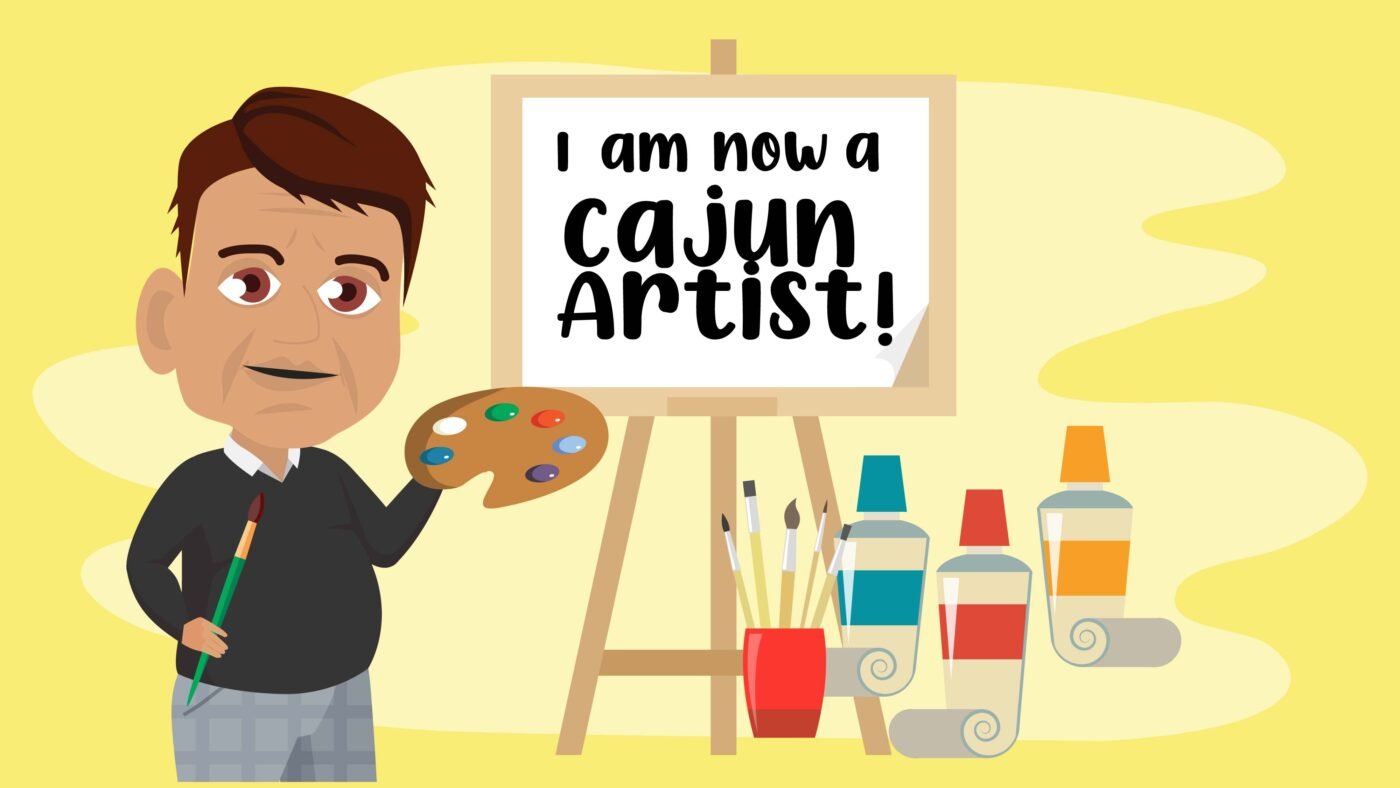
He was asked to paint a collection of Cajun ghost stories for a book among his many commissions. (1984) One of the stories was the painting of a werewolf, known as the Loup-garou. George knew the story well. His mom used to tell him as a little boy, “if you are naughty, a werewolf from the forest will come and get you!” It’s a typical boogeyman story and is an old French story told in France so children would behave.
The birth of the Blue Dog
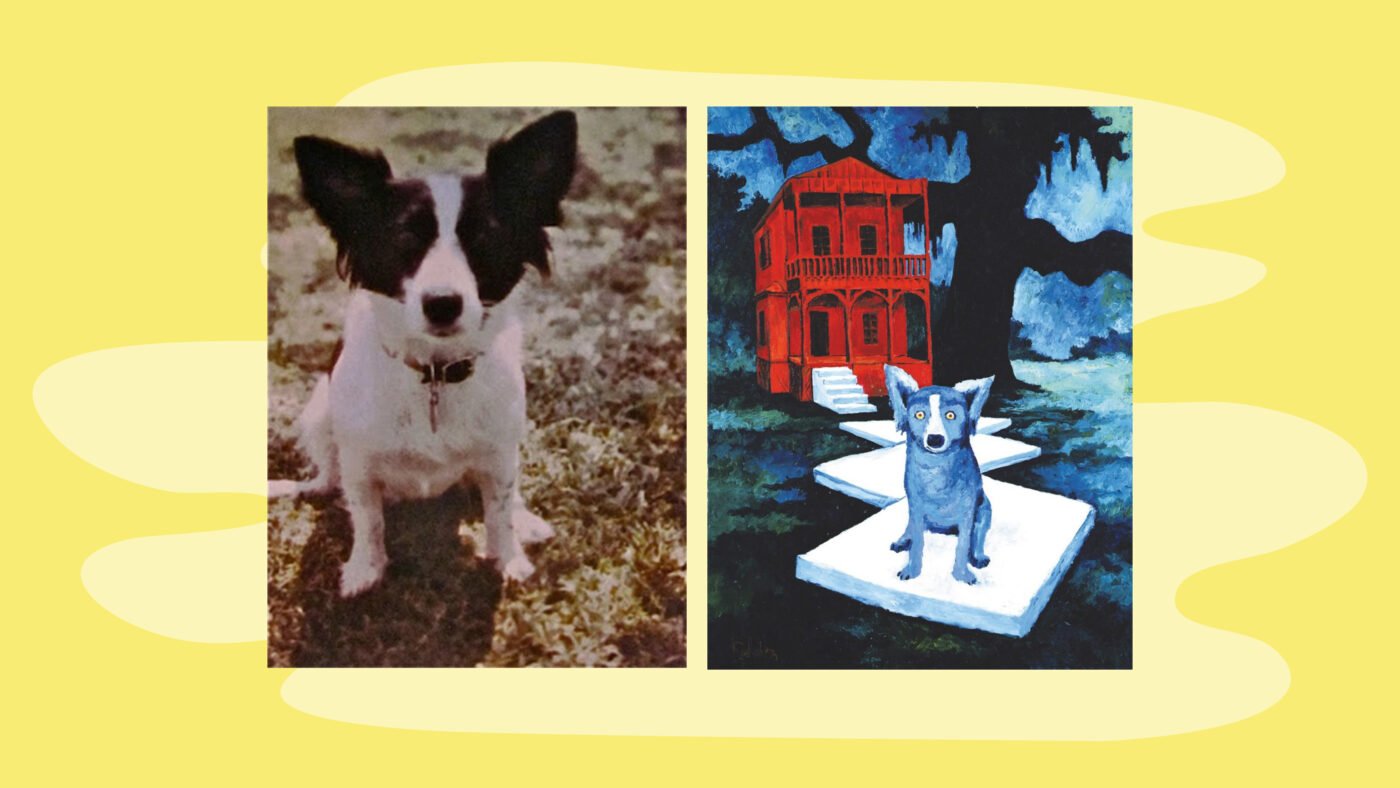
While working on this Ghost story, George paged through his visual diary and scrapbooks, looking for a possible visual reference for a werewolf. He stumbled upon a photo of his deceased dog Tiffany. Tiffany was not a wolf; she was a dog; she wasn’t blue. She was black and white. Since the story of the Loup-garou is set at night time during a full moon, George wanted to capture the effect moonlight and the night has on colour. So Tiffany’s fur became blue and her eyes yellow.

George became fascinated with the Loup-garou image and painted it repeatedly. For four years, he called it the Loup-garou. One day at an art exhibition, he overheard people calling the paintings The Blue Dog, which changed everything for George. It altered George’s thoughts that he could use the Blue Dog as an icon for Cajun Culture. A symbol that would be catchy and easy to relate to.
He always hung the blue dog portraits at eye level. The dog was staring straight into the viewer’s eye. Viewers would not look down on the dog nor the dog down at them. He always painted the dog as if it was a person. He always kept Blue Dog in the same position to become an icon, symbol, a kind of stamp for Cajun Culture.
“The yellow eyes are the soul of the dog. He has this piercing stare. People say the dog keeps talking to them with the eyes, always saying something different. People who have seen a Blue Dog painting always remember it. They are really about life, about humankind searching for answers. The dog never changes position. He just stares at you. And you’re looking at him, looking for some answers, ‘Why are we here?’ and he’s just looking back at you, wondering the same. The dog doesn’t know. You can see this longing in his eyes, this longing for love, for answers.”
Rodrigue on the Blue Dog.
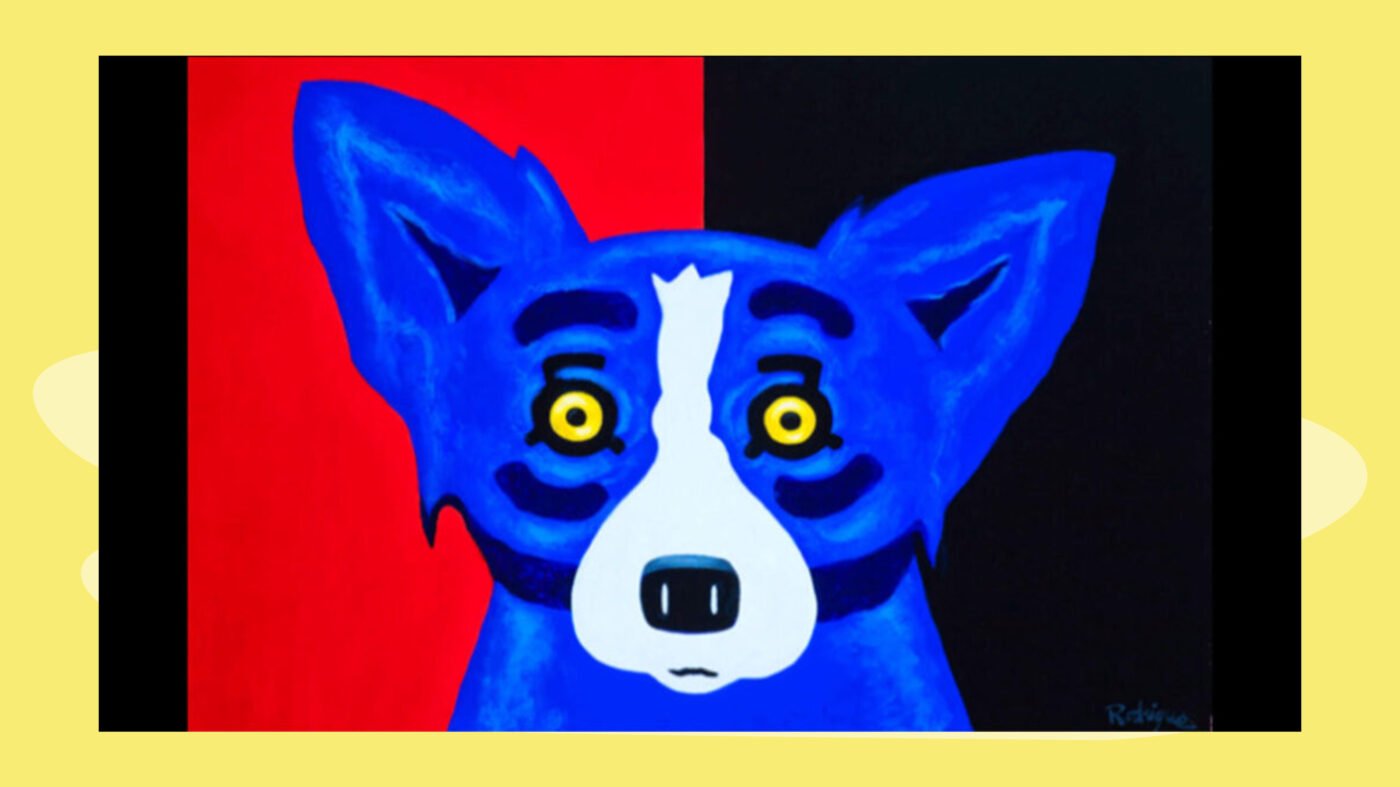
Blue dogs started travelling through America and became very popular.
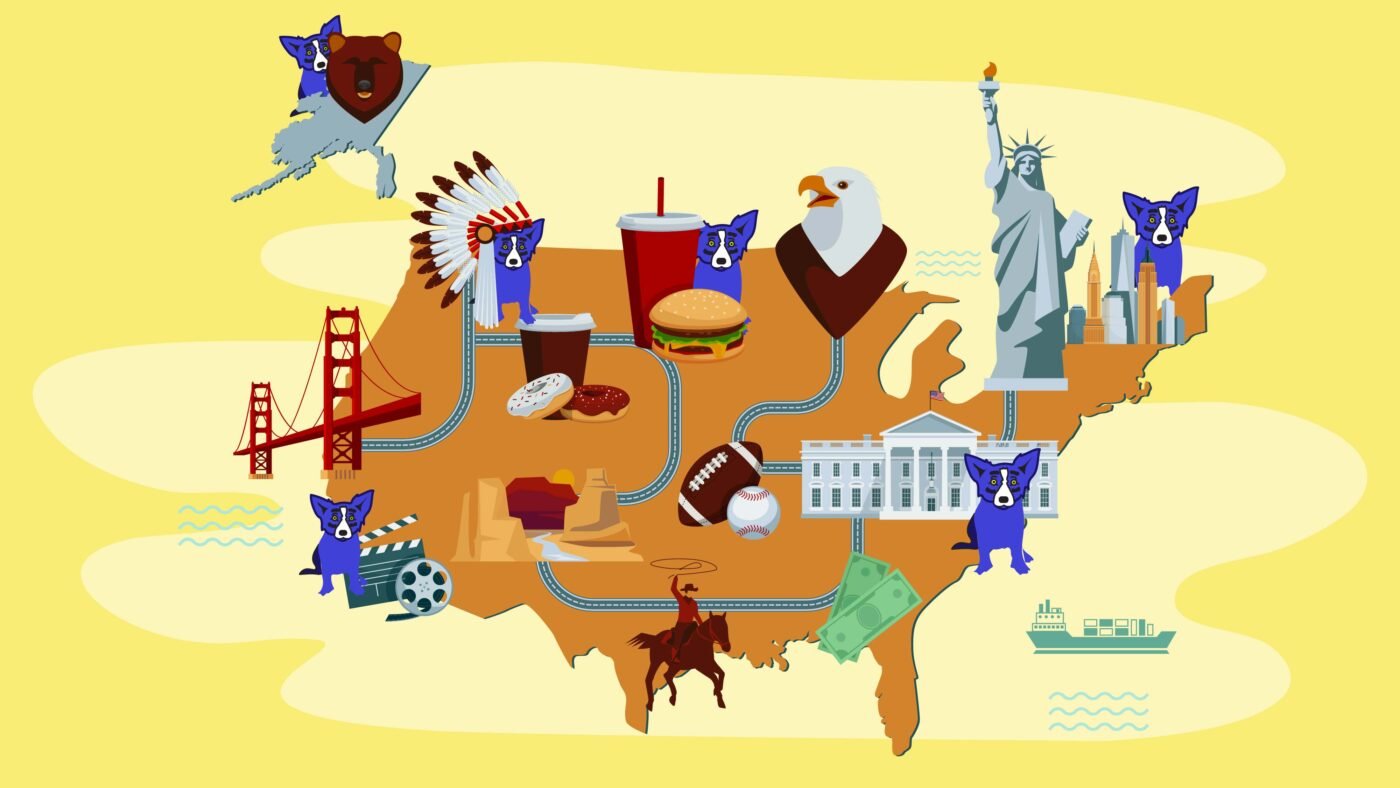
Blue Dog Success
The Blue Dog was made popular in America by Absolut Vodka in 1992 when Rodrigue was honoured as an Absolut Vodka artist joining famous artists such as Andy Warhol, Keith Haring and Hans Godo Frabel. The Blue Dog was used by both big brands such as Absolut Vodka and Xerox. Both promoting Blue Dog through a national advertisement campaign.

Bill Clinton/ Al Gore Presidential Inaugural Blue Dog Posters by George Rodrigue, 1997 He also designed marketing material for the New Orleans Jazz & Heritage Festival, which feature portraits of Louis Armstrong, Pete Fountain and Al Hirt.
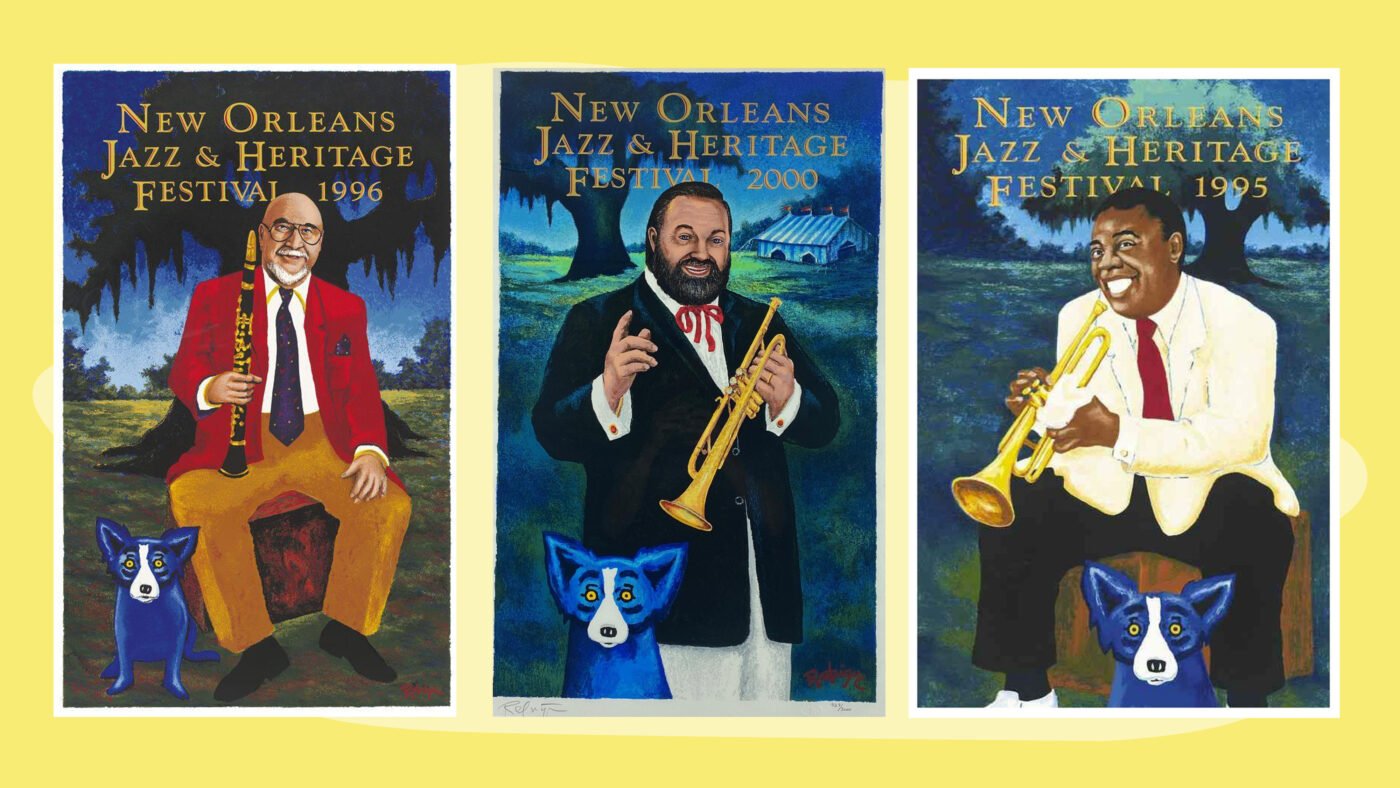
He painted Blue Dog with presidents, blue dog inside an Andy Warhol Soup Can, Blue dog with Marilyn Monroe, and Blue Dog exploring American Culture and achievements. This catapulted George Rodrigue to fame and led to many other commissions, including the president of the United States, Bill Clinton.
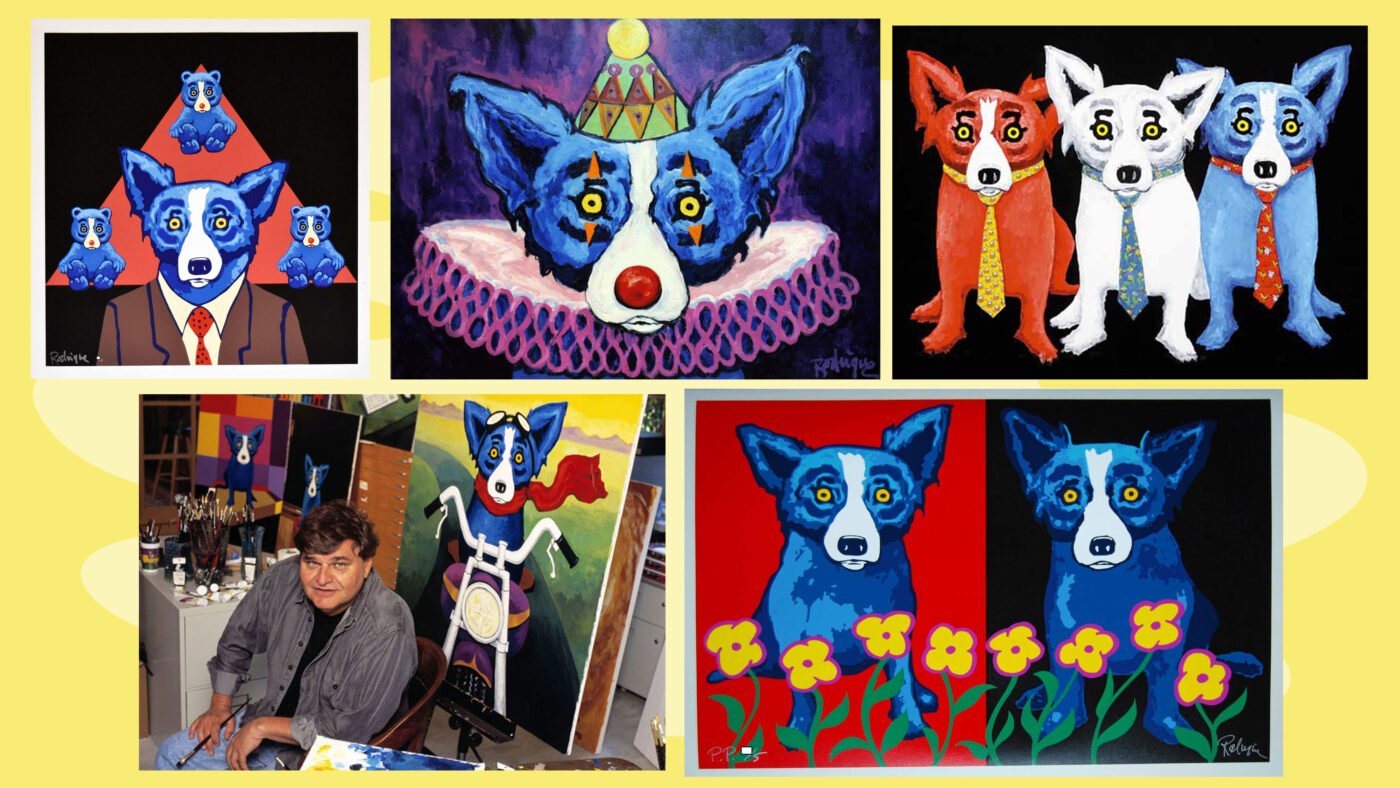
George Rodrigue demonstrated his patriotism often within his paintings. In the book The Cajuns of George Rodrigue, he wrote,
“I have a series of paintings showing the American flag to reveal the great national pride of the Cajun. He wanted to be a part of something; he wanted a country; he wanted to be an American.”
George Rodrigue
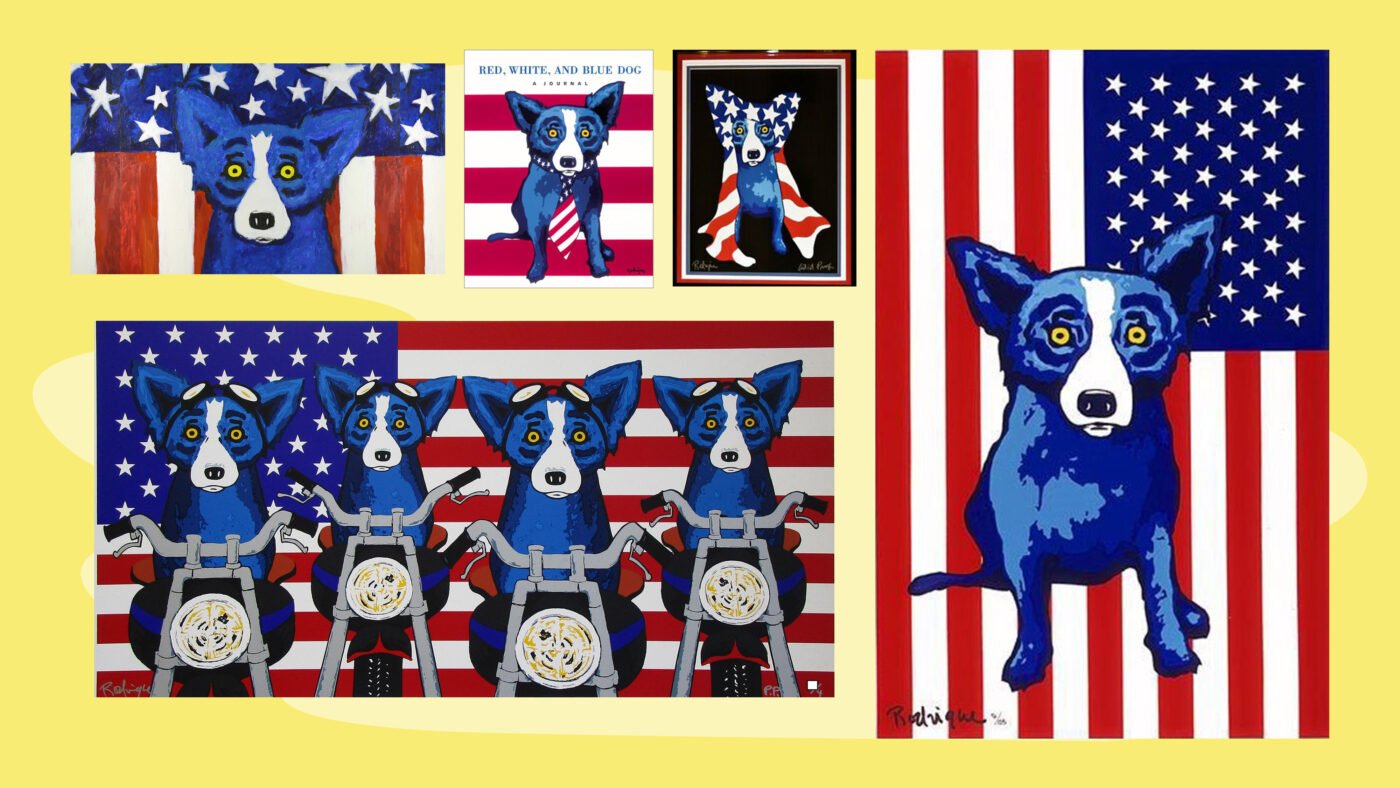
Reception of his work
Critics were not always impressed, saying George was simply riding the wave of Pop Art to achieve quick fame, but George Rodrigue did not care. He simply said:
“You have to do something that attracts the attention,” “I didn’t start out doing that, but I have an audience. It’s great.”
George Rodrigue
George kept on painting his Cajun Cultural scenes as well. He painted The Aioli Dinner a few times. He even included it in one of his Xerox adverts with the tagline “a Family Business” He also couldn’t resist including the Blue Dog into his copy of The Aioli Dinner. He said there was space for Blue Dog on the front lawn all these years.
Owner of galleries
Rodrigue established his art galleries in California; and two in Louisiana, Lafayette and New Orleans. Blue Dog became a commercial success appearing on various merchandise such as pins, jewellery, shirts, bumper stickers and pillows.

Response to Hurricane Katrina
In 2005 a massive hurricane hit George’s beloved city New Orleans in Louisiana. It was a devastating disaster with over 18000 deaths and caused $125 billion in damages.

George Rodrigue was forced to relocate temporarily. In the wake of Hurricane Katrina, Rodrigue’s blue dog posters raised hundreds of thousands of dollars for relief efforts. Days after the disaster, he created We Will Rise Again, depicting the American flag and Blue Dog covered with water. The Blue Dog is partly submerged; instead of the usual yellow eye, the eyes are now red with a broken heart. The red cross on the dog’s chest calls out for help like an S.O.S. distress signal. George Printed and signed thousands of posters of We will rise again to raise money for the Red Cross. He also painted You Can’t Drown the Blues for fundraising.
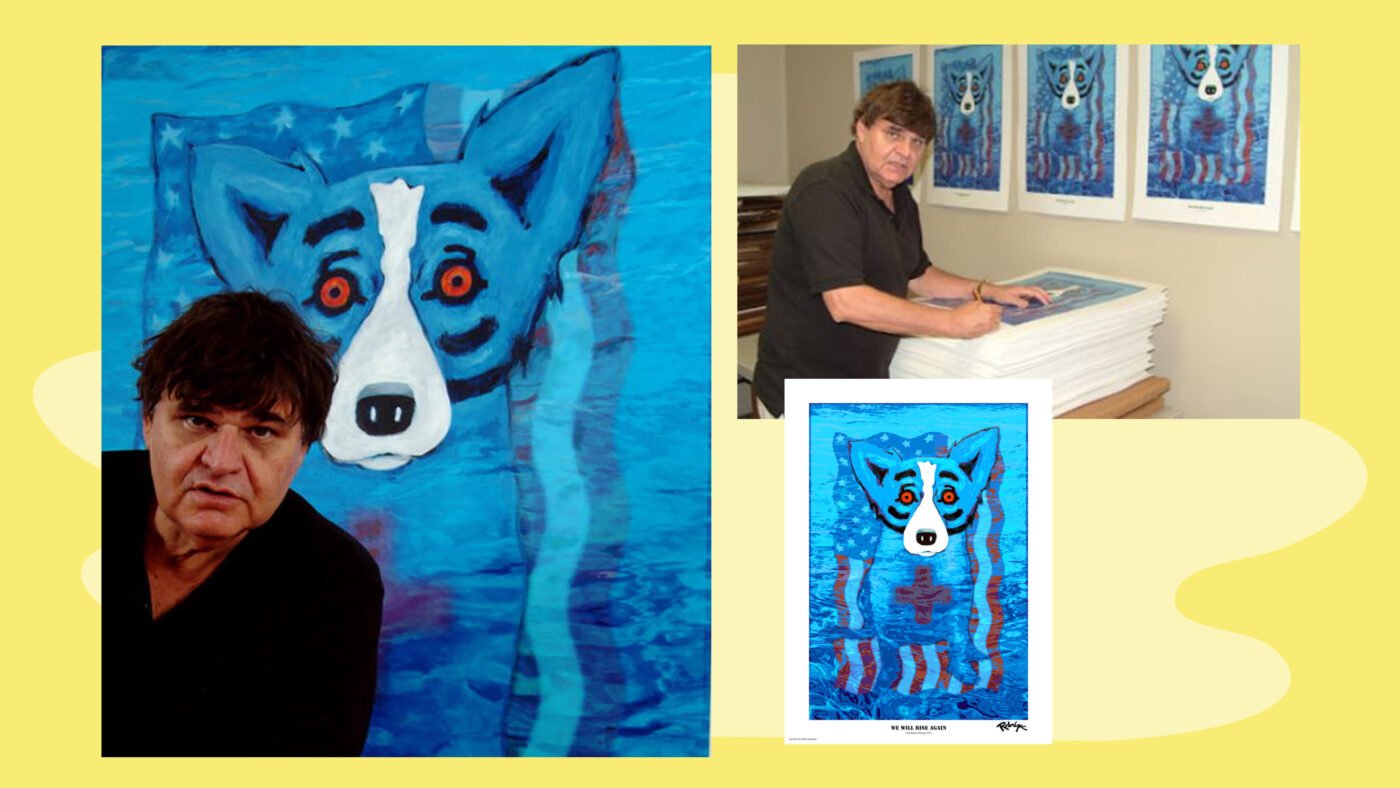
Reception of his work now
In 2007, the Dixon Gallery hosted a 40-year Rodrigue retrospective exhibition, which travelled in 2008 to the New Orleans Museum of Art. Rodrigue was awarded an honorary doctorate at the University of Louisiana at Lafayette in 2009. He has been awarded many accolades since.
In 2010, a 26-foot-tall, three-dimensional sculpture of his dog was installed at a busy intersection. It instantly became one of the New Orleans area’s best-known public artworks.
The George Rodrigue Foundation of the Arts.
In 2009, Rodrigue formed the George Rodrigue Foundation of the Arts (GRFA), a non-profit organisation advocating the importance of the visual arts in children’s development. The foundation encourages the use of art within all curricula and supports various art educational programs. Programs of the GRFA include an annual Scholarship Art Contest. The foundation also donates art supplies to schools in Louisiana. It trains hundreds of teachers annually in arts integration so that students can unlock their traditional subjects through the arts.
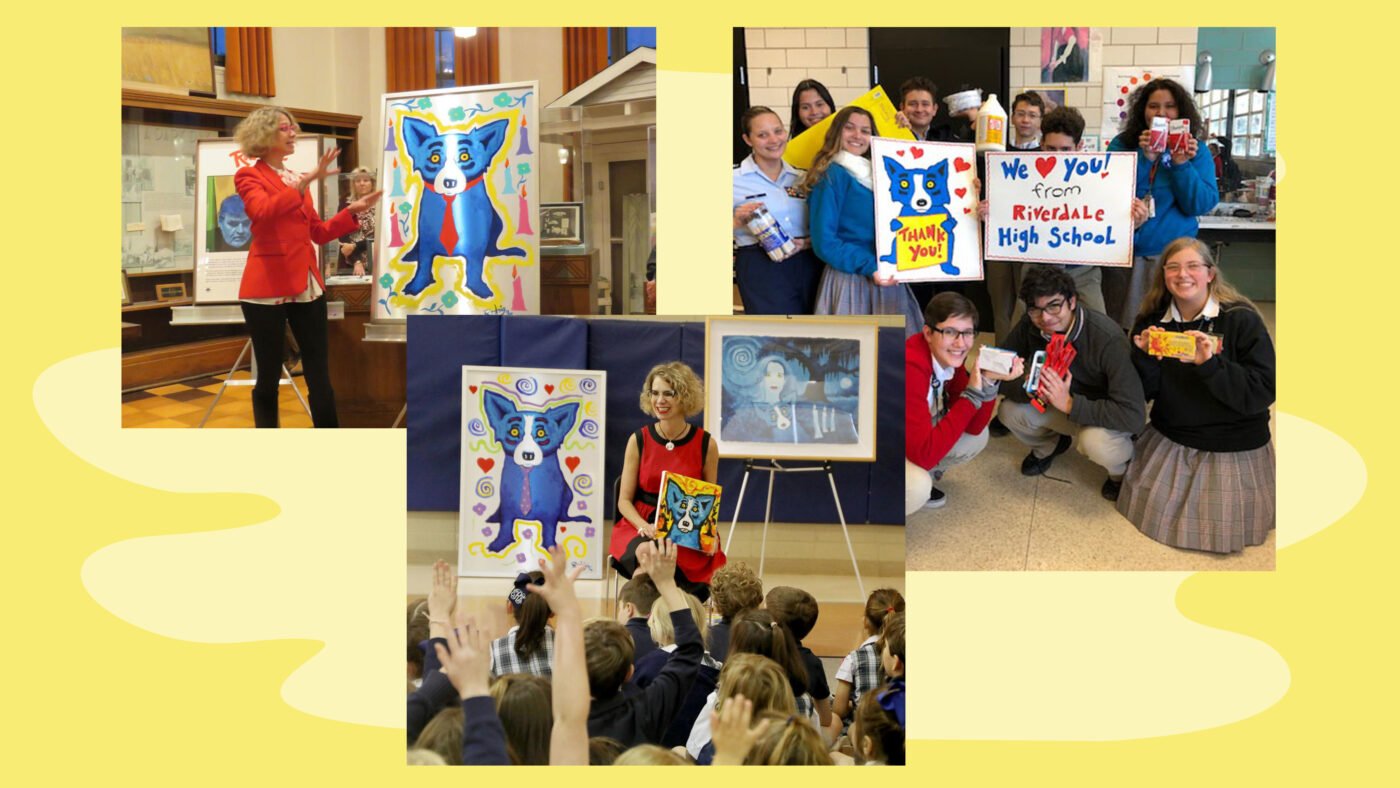
Death
In October 2013, George and his wife Wendy told the media that Rodrigue had been diagnosed with Stage 4 lung cancer. The tumours had spread through his body. A possible cause could have been the spray Rodrigue used to seal his canvasses. He often used this toxic varnish inside an unventilated studio. On December 14, 2013, artist George Rodrigue died at the age of 69.

Value of his artworks today
The value of Rodrigue’s work has continued to rise after his death. In April 2015, the Neal Auction Company of New Orleans sold a Blue Dog painting for $173,000. Some were rumoured to have sold for ten times that.


BUY OUR GEORGE RODRIGUE WORKSHEETS
Worksheet pack that includes notes and fun activities. Ideal for art students and history students to learn more about George Rodrigue
Please head over to our blog for many more amazing art history lessons and subscribe to our YouTube channel with videos on art history, art projects and many art courses.

